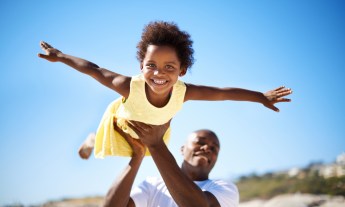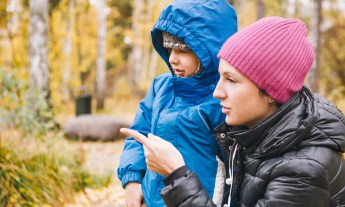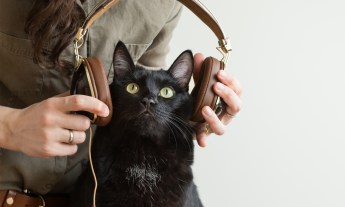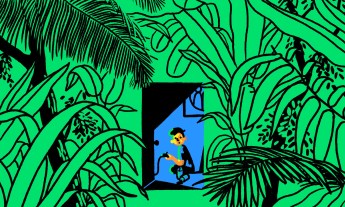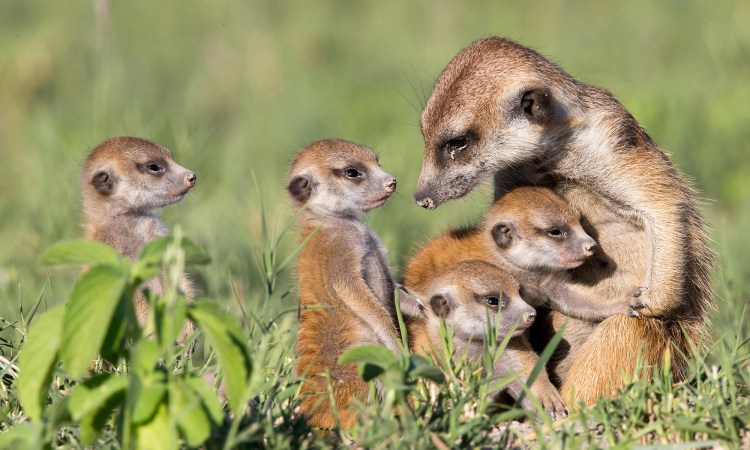
Did you know that meerkats stay close to home, even as adults, so they can inherit territory when Mom dies? Or that North American red squirrel mothers gift real estate to their kids (complete with stockpiles of food)? Evolutionary biologist Barbara Natterson-Horowitz and writer Kathryn Bowers make the case for why parents — animals and humans — should remain involved in the lives of their full-grown offspring.
For the past decade, parents around the world have been criticized for helicopter parenting (hovering over their kids’ activities and moods) and for raising boomerang kids (children who return home after initial independence at college or in the work world). In fact, this has become the norm in the US. As of 2016, 18-to-34-year-olds were more likely to be living with their parents than with a romantic partner.
This trend goes well beyond the US. More than 60 percent of Polish, Slovenian, Croatian, Hungarian and Italian 18-to-34-year-olds live at home with parents, as do two-thirds of 22-to-29-year-olds in China, Hong Kong, India, Japan and Australia. And in most countries in the Middle East, young adults live at home until marriage.
Humans are notable for the long time we spend in dependent childhood and adolescence compared with other species, but we may not be such outliers after all. Many wild animal parents do not cut off support the minute their offspring leaves. In fact, many dial up the help and the training. If a youngster is having trouble getting enough to eat, animal parents will often feed them. If a youngster isn’t meeting peers, parents may provide introductions. Some bequeath territory and offer access to food larders they’ve been stocking away.
The ecological term for these boosts is “extended parental care.” Conditions that lead human and animal parents to offer their grown offspring extended parental care are remarkably similar across species. Dangerous environments, food shortages, competition for territory and pressure to find mates keep young adults living at home.
If boomerang kids were birds being observed by ornithologists instead of humans being critiqued by social scientists, a supportive parent-offspring relationship might be called the more bird-specific “post-fledging care.” And maybe instead of bemoaning it, critics would recognize, as biologists do, that it can improve the future success and survival of offspring.
It’s useful to put the human versions of extended parental care into a cultural context. Historian Steven Mintz writes that in America, “a protracted transition into adulthood is not a new phenomenon,” and “the decade stretching from the late teens to the late twenties has long been a period of uncertainty, hesitation, and indecision.” He tells the story of a young man who after graduating from Harvard in 1837 at the age of 19 was “hired as a school teacher only to resign two weeks later. He then intermittently worked in his parents’ pencil factory, served as a tutor, and shoveled manure.” He also worked for a while as an editorial assistant. Eventually Henry David Thoreau found footing as a writer and land surveyor, although he continued to be involved with and supported by the family pencil business.
“Contrary to what many people assume,” Mintz writes, in the early US, “the overwhelming majority of young people in the past did not enter adulthood at a very young age … During the early 19th century young men in their teens and even twenties tended to swing between periods of relative independence and phases of dependence when they returned to the parental home.” It’s been like that during most of America’s history, and Mintz describes the transition to the adult world as having been traumatic — parents died early, education was often intermittent, and living arrangements were uncertain.
In many species of birds and mammals, young adults old enough to be “ready” to move out are sometimes allowed — even encouraged — to stay in the home territory and help out. Occasionally these aunts and uncles stay home for life. The arrangement is win-win-win for parents, offspring and new younger siblings. The young adults care for siblings by bringing food and acting as babysitters and mentors; they help the group by adding vigilance and security and extra numbers for mobs. Rarely are they freeloaders.
Staying in the home nest for extra time before dispersing is also not a sign of failure to launch. The benefits for these lingering young adults are many. If the environment has too many predators, young adults may be physically safer staying on longer with parents. If it’s a year with a lot of peer competition, waiting a season can boost a young bird’s chances at finding food, territory and mates. Another boon is that they’re on-site in the event a parent dies and succession is up for grabs. They might inherit territory.
For a low-ranking female meerkat, the best strategy for getting her own territory is to stay close to home and wait for Mom to go. This strategy is also seen in chimpanzees, although males tend to be the siblings to inherit. Western bluebird sons who stay home over winter with at least one parent not only are more likely to survive the season, but they also tend to inherit some of their parents’ territory come spring. The territory often comes with what Cornell scientists call “mistletoe wealth,” stocks of the plant that serve as shelter and food for these birds.
Humans are not the only animals to bequeath possessions to their young. North American red squirrel mothers leave their territories to offspring, usually adolescents, and, if they can, parcel in as much nearby vacant territory as they can manage. Besides real estate, they can also stock the land with extra food, hiding larders all over it before relinquishing the whole package to their offspring. For squirrel mothers, death isn’t when they transfer their estate. Instead, it’s during middle age that she packs up and goes off on her own journey just as her adult children are ready to take over the property.
One of the most powerful ways for animal parents to help their offspring is to point them in the right direction before they actually leave. Parental excursions, a behavior seen in some mammals and many birds, involves a parent traveling out into the world with an adolescent offspring, scouting out food, securing territory, and introducing the offspring into society. Like the social-climbing mothers of Jane Austen novels, a songbird called the Parus major takes her eligible bird offspring on visits to other flocks to introduce them to the best and highest-status potential mates.
It’s clear from many studies of a range of species that extended parental care saves lives — preventing young animals lacking in life skills from dying in the dangerous days and weeks after leaving the nest. But the benefit of extended parental care comes at a cost: a delay in learning to feed yourself. A study of white-winged choughs, an Australian bird, showed that youngsters who stayed at home with adults got more food and emerged from winter in better physical condition. But the trade-off came once they were on their own. Lacking experience, they were poorer foragers than birds who’d gotten no help. Birds who receive extended parental care also show delayed antipredation behaviors. Young Mexican jays who spend extended periods with mature adults don’t learn crucial mobbing skills. Young animals must strike a balance between receiving care to keep them safe and fed and honing the life skills they’ll need when they are truly independent.
In this context of extended parental care in animals, it’s interesting to think about the criticism leveled at today’s parents who remain involved in their kids’ lives through young adulthood. A report from the Harvard Graduate School of Education noted that “especially in affluent communities, their parents are hyper-involved in their academic and social lives, so it’s unusual for teenagers to study, arrange a meeting about a bad grade, or even resolve a disagreement with a friend without parental help.”
The excesses of some parents are easy to mock and robbing young adults of opportunities to practice resolving conflicts is clearly misguided, yet amid the criticisms, the clear importance of continued parental involvement gets muddied. Mintz puts it like this: Parents “have good reason to be standing by with a rescue rope as their children try to make their way through the overgrown and traditional paths to adulthood that may no longer secure employment. The 20s have replaced the teens as the most risk-filled decade. Problematic behavior — binge drinking, illicit drug use, unprotected sex that leads to disease or unplanned pregnancies, and violent crime — peaks during this age, and missteps during these years can impose lifelong penalties.”
In the rush to criticize parental over-involvement, a larger problem gets lost: the lack of sufficient parenting for many. For young adult humans without parents or parent-like mentors, dispersing into the adult world can be dangerous. According to one analysis, young people aging out of foster care in the US — 18-year-olds without family to provide financial or emotional support — show increased rates of unemployment and reliance on public assistance. Their physical and behavioral health is worse than peers; they’ve often reached lower levels of education; and they’ve had more brushes with the criminal justice system.
Mentorship — what you might call a human version of “post-fledging” social care — vastly improves the lives of this vulnerable population. The report found that foster children who had a relationship with a competent, caring adult mentor fared much better during adolescence and the transition to adulthood. The best outcomes were for adolescents who found a “natural” mentor, which the researchers defined as “a very important, nonparental adult that exists in a youth’s social network, like a teacher, extended family member, service provider, community member or coach.”
Extended parental care is widely, if not universally, seen throughout nature. And with good evolutionary reason: A parent’s genetic legacy lives in their offspring but persists in their grand-offspring. You can think of that behavior as motivated by personal selfishness or evolutionary fitness, or you can think of it as motivated by love. Either way, it’s irrefutable that parents all over the planet — both humans and animals — are invested in the safety, health, and, yes, happiness, of their children.
Recognizing the advantages and disadvantages of extended parental care in the animal world can help humans develop a more realistic and compassionate understanding of how and when to support their older and adult children. It is true that white-winged choughs and scrub jays who stayed on might not have learned to forage or chase off predators as well as those who left. But if the world outside is dangerous and a young animal lacks the skills to protect itself, it may be safer to stay at home. Mintz puts it even more bluntly: “Parental support can play a crucial role in preventing their offspring’s lives from going severely off track.” Examples in the animal world suggest that extended parental care is as much an evolutionary strategy as an indulgence.
Excerpted with permission from the new book Wildhood: The Astounding Connections between Human and Animal Adolescents by Barbara Natterson-Horowitz and Kathryn Bowers. Published by Scribner, an imprint of Simon & Schuster, Inc. Copyright © 2019 Barbara Natterson-Horowitz and Kathryn Bowers.
Watch Barbara Natterson-Horowitz’s TED Talk here:












